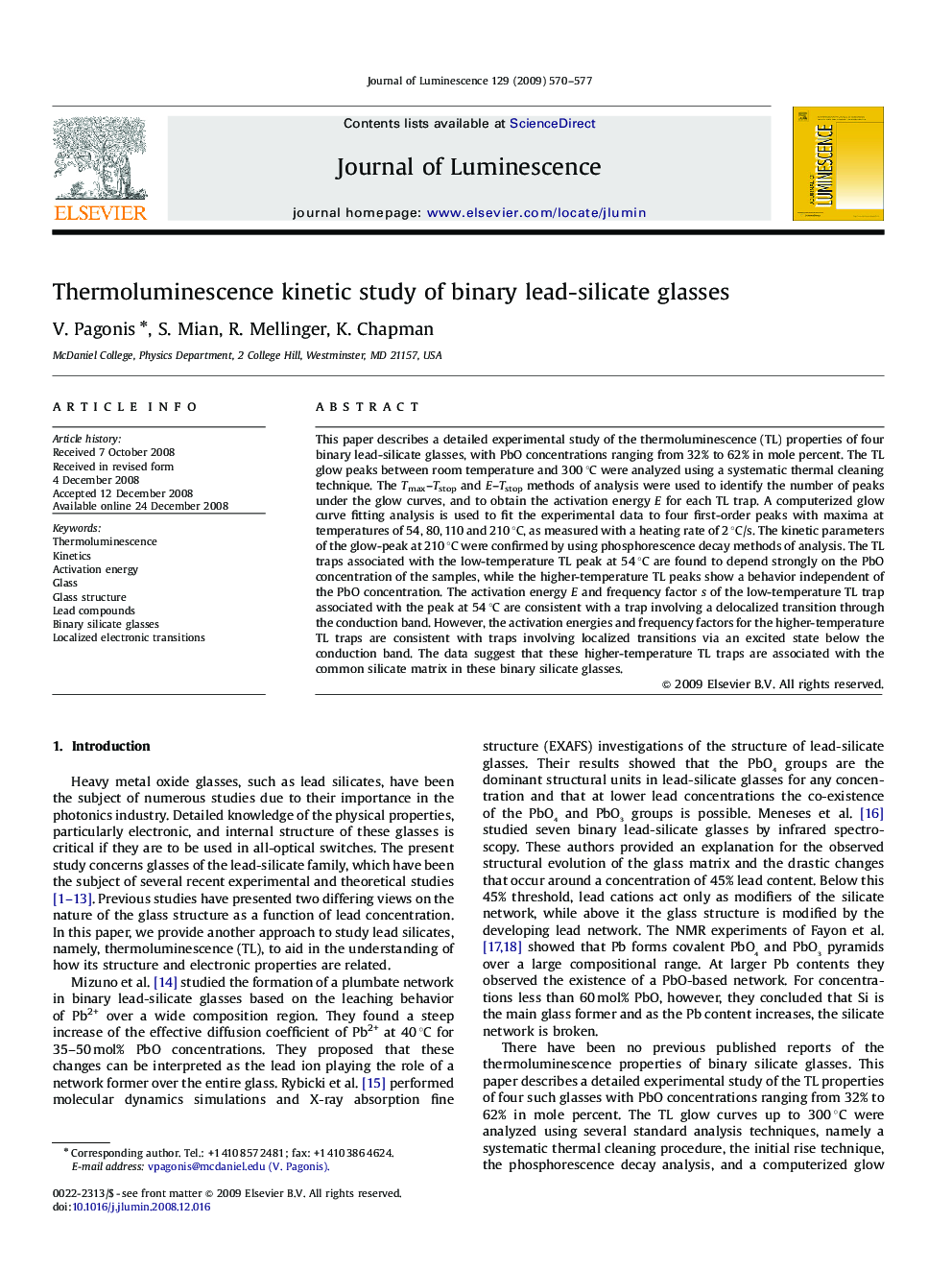| Article ID | Journal | Published Year | Pages | File Type |
|---|---|---|---|---|
| 5403297 | Journal of Luminescence | 2009 | 8 Pages |
Abstract
This paper describes a detailed experimental study of the thermoluminescence (TL) properties of four binary lead-silicate glasses, with PbO concentrations ranging from 32% to 62% in mole percent. The TL glow peaks between room temperature and 300 °C were analyzed using a systematic thermal cleaning technique. The Tmax-Tstop and E-Tstop methods of analysis were used to identify the number of peaks under the glow curves, and to obtain the activation energy E for each TL trap. A computerized glow curve fitting analysis is used to fit the experimental data to four first-order peaks with maxima at temperatures of 54, 80, 110 and 210 °C, as measured with a heating rate of 2 °C/s. The kinetic parameters of the glow-peak at 210 °C were confirmed by using phosphorescence decay methods of analysis. The TL traps associated with the low-temperature TL peak at 54 °C are found to depend strongly on the PbO concentration of the samples, while the higher-temperature TL peaks show a behavior independent of the PbO concentration. The activation energy E and frequency factor s of the low-temperature TL trap associated with the peak at 54 °C are consistent with a trap involving a delocalized transition through the conduction band. However, the activation energies and frequency factors for the higher-temperature TL traps are consistent with traps involving localized transitions via an excited state below the conduction band. The data suggest that these higher-temperature TL traps are associated with the common silicate matrix in these binary silicate glasses.
Related Topics
Physical Sciences and Engineering
Chemistry
Physical and Theoretical Chemistry
Authors
V. Pagonis, S. Mian, R. Mellinger, K. Chapman,
